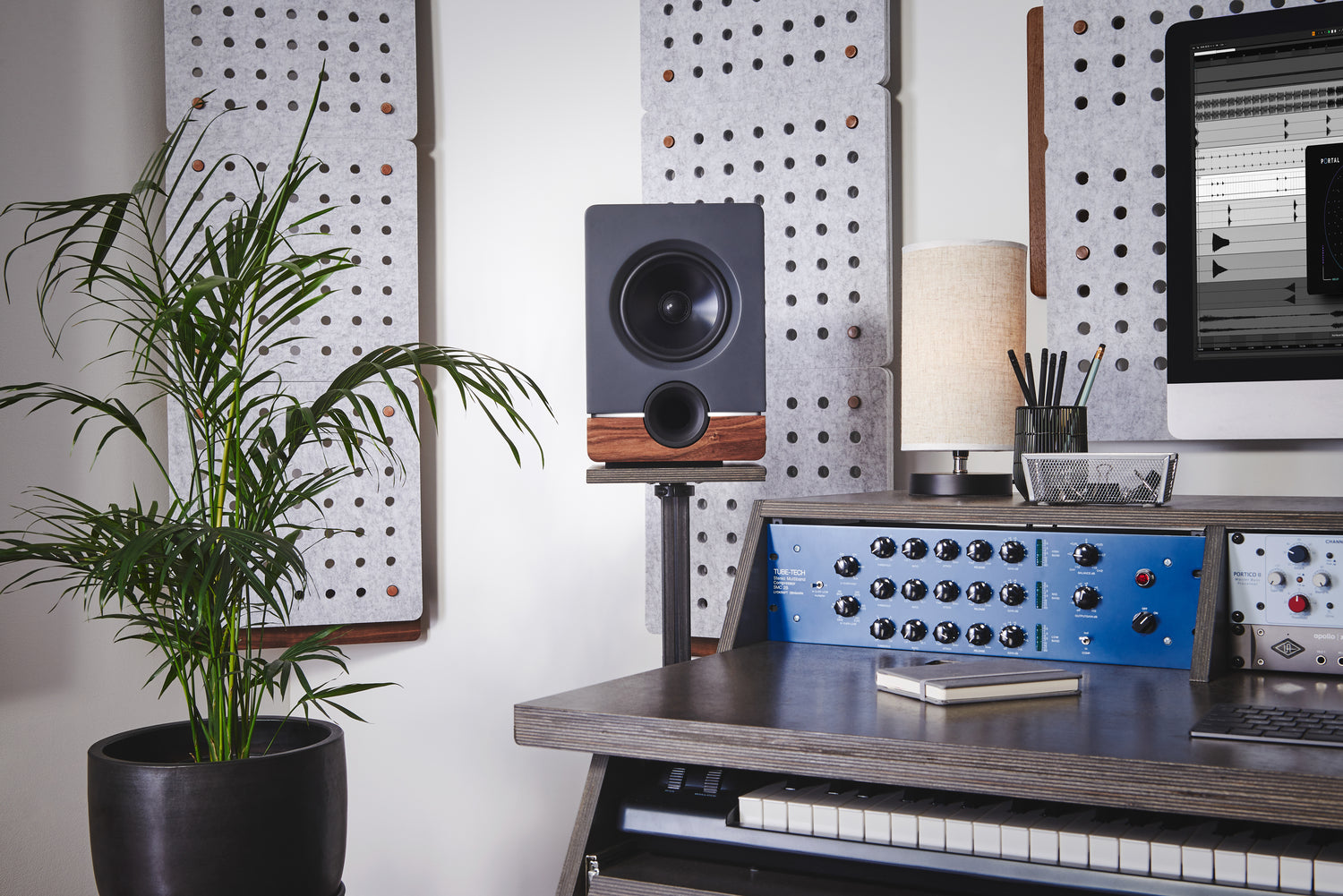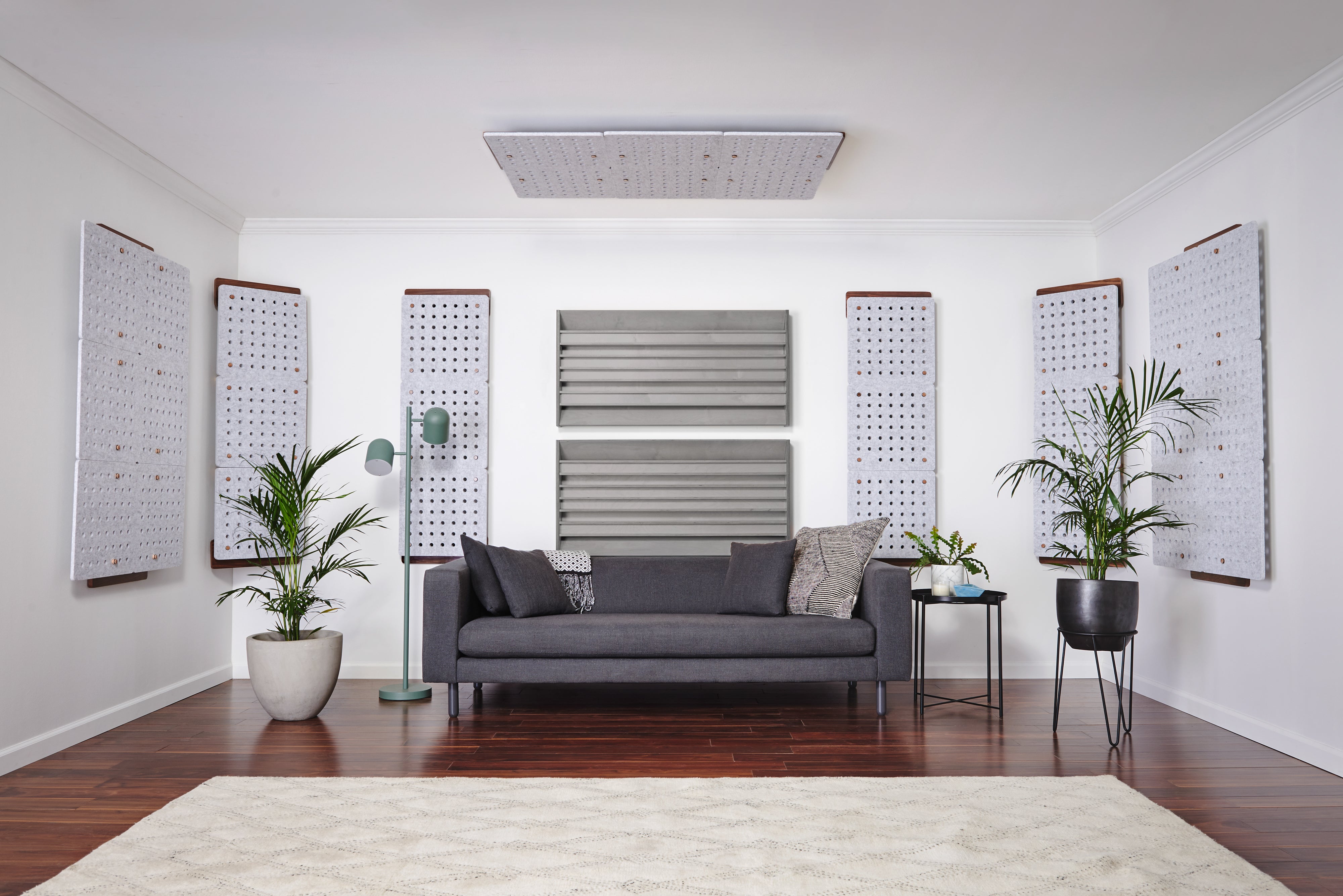Calibration and Its Importance
It is important to calibrate your studio monitors for not only the health of your ears, but also for accurate mixes. Our ears are very sensitive between 2kHz and 5kHz, and as sound pressure level increases or decreases, frequencies above and below that range are perceived differently. We also tend to perceive louder as better, so if we mix at a very high level, often when we turn it down, or listen to the mix later or on another system at lower levels, it will sound dull and lifeless. Because of this, it’s important that we mix at the volume level where we perceive the audible range equally. Fortunately, this has all been measured, and is known as the equal loudness contour.
It’s also critical to calibrate your monitors if you’re using multiple sets of monitors, so they play at the same volume when switching back and forth. Since we do perceive louder as better, it’s going to become a very frustrating mixing experience when your mix that sounds great on the louder monitors doesn’t translate and sounds bad on the quieter ones.
Calibrating your monitors is essentially matching volume between all of your studio monitors, and making the OdB level of the source match a certain real life decibel level. This decibel level should match that of the equal loudness contour. The standard is 85dB, but there’s a caveat–that standard was made for cinemas–unless you’re mixing in a cinema, that’s going to be very loud in a small room. It’s important that you calibrate the level for the size of your room, but fortunately, that has also been figured out.
How to Calibrate
You’re going to need an SPL meter, and if you do not have a dedicated meter, there are many smartphone apps that do an adequate job–just make sure to remove any phone case, and be careful to not cover the microphone with anything. Also, make sure that the app has the more flat C-weighted filter option.
Calibration Levels
As mentioned, the standard calibration level is 85dB matching 0dB from the source, but in a normal sized mixing environment is going to be very loud, because that level was calibrated for cinemas. The following chart is a standard reference level for different sized rooms. Keep in mind that the actual calibration will be about 3dB louder than the chart when both monitors are playing back simultaneously (you calibrate one at a time).
|
Room Size (square feet) |
Single Monitor Reference Level |
|
>6000 |
82dB |
|
3000-6000 |
80dB |
|
1500-3000 |
78dB |
|
450-1500 |
76dB |
|
<450 |
74dB |
Method of Calibration
There are many methods to calibrate your studio monitors, but the one described here is one of the most common. This method is not subjective, so it is also accurate. All you need is some pink noise and your meter. This is also easier with some assistance. If no one is available, you will need a mount for your meter.
This method assumes that you are using a DAW. If you do not have a DAW, you will need an audio source that can generate full bandwidth pink noise. There are many free samples available for download that you can play through your computer’s standard audio player. Full bandwidth pink noise presents equal energy per octave—this is different from white noise which presents equal energy per frequency band. Do not calibrate with white noise.
- Place the SPL meter in the listening position. Most meters are designed to have the microphone pointed at the ceiling rather than the source, but check the manual or the documentation with the phone app.
- Set both monitor levels to -10dB, and turn both of them off.
- Load your sound generator and start playing pink noise. Make sure the levels in your DAW are set to 0dB, and that your audio interface, or mixer, is set at unity gain.
- Turn on the left monitor, and slowly increase the gain on the back of the monitor until you reach the appropriate level on the chart. When you have reached that level, turn off the speaker.
- Turn on the right monitor, slowly increase the gain on the back of it until it has reached the same level.
- Turn off the sound generator.
- Turn the left monitor back on.
- With both monitors on, you should see a level that’s around 3dB higher.
- Sit down in the mix position, and play some music that you are familiar with. You may need to slightly change your speaker position until you have a balanced sweet spot to mix from.
Rinse and repeat for each set of monitors you have.



